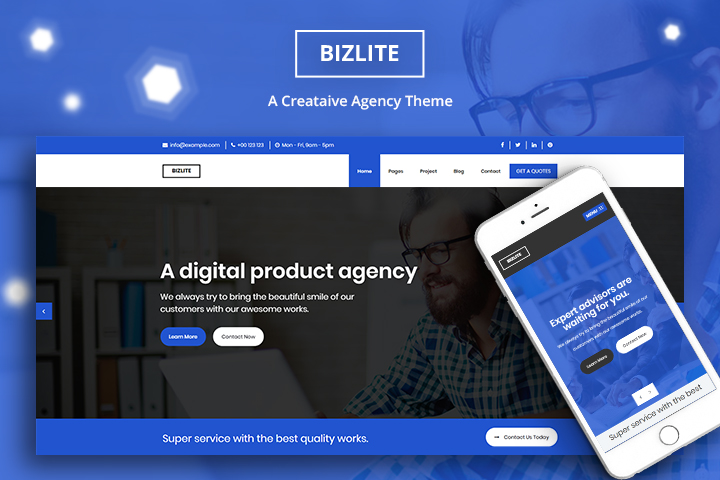Content is a revenue driver for business; it’s not just a marketing tool as digital transformation accelerates across industries. As channels shift and international scaling and increased personalization initiatives take hold, enterprises can no longer rely on on-the-fly content creation. Instead, they need scalable content models that change as the enterprise expands. The content model is part and parcel of operational requirements, getting to market quicker, and omnichannel initiatives. Yet it’s not just within the purview of a CMS implementation; scalable thinking is an expectation. Moving forward.

Structure as a Scalable Solution
Many businesses find themselves in a position of need when it comes to creating content types and assets for the current campaign at hand versus a structural, scalable solution. But this puts companies in a position of content debt, redundancy, and inconsistent gaps and workarounds as the business grows. Where content scalability is concerned, the framework relies upon the logic that structure is a necessity. A headless CMS supports this approach by enabling teams to decouple content from presentation, promoting modularity and reuse across channels. By thinking in interchangeable parts, relationships, and types of information, teams can create a content infrastructure that can bend and stretch without starting from scratch when new opportunities arise in new markets, on new platforms, and through new audiences.
Business Needs Assessments and Content Infrastructure
Scaling content frameworks comes from assessing content infrastructure and business needs over time. Is the company planning on branching into horizontal regions? New brands? New platforms such as applications, IoT, or digital signage? Knowing the answer to the questions above should inform the construction of content types. For example, if companies know they will be expanding into multilingual efforts one day, locales should be variants from the very start. If companies anticipate personalization expansion efforts, schemas should be created from Day One for component-level segmentation and tagging. In other words, integrate what will inevitably happen in the future into the present so that content is irrelevant of time when the company shifts forward.
Modular Content Types Are Scalable Components
The essence of scalability lives within modular content types. Rather than creating one big entry for one landing page, a scalable option urges teams to think about category-level entries for banners, testimonials, FAQs, and product cards. Each can exist across layouts, channels, and purposes when decoupled. Also, the ability to edit one component versus a large body fosters faster iterations with decreased risk. Non-developers can create rich experiences using a library of scaled components without needing Developer assistance to build things out completely, allowing all teams to effectively scale in content need.
Define Relationships Between Content Types
A scalable content model not only allows for defining different types of content but also how they connect. A blog post connects to an author profile and a product card, and a CTA banner. A product page connects to accessories or relevant support articles. These renderings should be represented in the model instead of being hardcoded into templates. This type of logic allows everything to be subsequently rendered later on, should the business desire. Business content rendered in this way ensures consistency, ability to navigate, and reuse across any number of experiences. As a company scales, the ability to connect various business content will be key to managing an otherwise unmanageable amount of content to create effective avenues for users.
Define the Ability to Scale Across Channels and Brands
When companies operate under a philosophy of scalability for their content types, it does not and should not mean that they will be able to produce more. It means they can do more with less. The more a company can reuse component types, the easier it is to provide a consistent message across channels, web, mobile, app, kiosk, etc., without having to undergo duplicate efforts and time. By decoupling presentation from content, headless CMS platforms allow teams to use the same structured data across any number of front-end frameworks and brand experiences instead of expecting a different process every time to accommodate a new customer-facing experience. A press release can go to a newsroom or mobile feed, or partner portal as long as they all point back to the same compliant source of truth.
Compatible with Global Growth
Scalability allows models that don’t fragment content when localization comes into play. Scalable content models allow for structured localization, locale variants exist nested or as parallel tracks within the same type instead of requiring an entirely new entry for a new language/region/market. Editors can see translations side by side, and governance is easier with one structure. A flexible content model allows for regional overrides, fallback logic, and locale metadata for compliance, allowing businesses to get up and running faster with fewer mistakes and time spent creating brand new structures.
Thinking About Metadata and Taxonomy From the Start
Metadata and taxonomy are often an afterthought, but they shouldn’t be. They’re core to any scalable model. Tags, taxonomies, categories, and classifications help content be organized and provide more dynamic experiences via filtering/segmentation, recommendations, and search. Thus, when metadata is part of the content model, for example, efforts around content targeting and curation can be automated when the volume spikes. When a brand labels its product tutorials as “Getting Started” or “Advanced Features,” they can be suggested to users or show up in search page results for those learning what they’re trying to find. Moreover, well-structured metadata simply helps reporting, personalization, and AI-based rendering engines.
Building Content Models Based on Governance Needs
Content governance becomes a scaling concern the more the content library needs to grows. Scalable content models take this into account and include required fields and structures to enable approval processes, versioning, determining ownership and who archives what, and audit trails. For instance, access can be role-restricted so that nobody can change any type of content in any region. Some fields allow for archiving or expiration that automatically dictate how content should be treated over time. These proactive elements reduce chaos when there are teams involved, projects that expand, efforts that need to be compliant, and ensure that no content ever goes out of compliance, becomes irrelevant, or runs on beyond its usefulness.
Supporting Agile Development with Soft Architecture
Business needs change, and so should your content model. That’s why a scalable one isn’t static; it should be made to evolve. The ability to add a new field because you sense the need for personalization, restructure certain types to support new use cases, and should be able to happen without disrupting what’s already live. Access through the headless platform that allows for versioning and migration workflows, supports such changes safely. Keeping soft architecture fluid enables businesses to pivot at a moment’s notice without expensive rework or downtime.
Involve Teams Early for the Most Effective Model Build
Content modeling is as much a cross-functional collaboration as it is a theoretical endeavor. Your content structure will be used and relied upon to function down the line by editorial teams, marketing teams, design teams, product teams, legal and development teams. Getting key stakeholders involved in the content modeling process from the onset helps avoid rework down the line to ensure the model meets expectations. Editors will need fields relevant to their workflow. Designers will need attributes that foster layout consistency. Developers will need varying degrees of data integrity for front-end rendering. When all crucial departments weigh in at the start, the deliverable will be a more scalable model that fulfills usability and strategic objectives.
Scale Models after Testing Them in Controlled Settings
Before content operations are scaled, it’s important to test your content models within actual use parameters. Whether it means using a segmented small team, a focus group, or even just an internal working team to assess whether your educated guesses were accurate, or new learnings develop, will prevent future backtracking of content models. You may discover extraneous fields, relationships requiring tightening, and equity of ease of experience in content intake. Discovering these items during a controlled experience (and communicating why there’s a need to keep it in that minimal setting) prevents large-scale disasters that could have been preventively avoided when assessing whether one can truly survive under the pressure of scaled operations. Moreover, this effort helps get buy-in from other teams since they can see you practice what you preach.
Scalable Models Can Only Be Effective with Documentation
A scalable content model can only be effective with documentation. As soon as models are created, guides should be provided explaining every content type, each field’s purpose, and its future purpose. This promotes the onboarding of new team members to be seamless, so that everyone across global offices can remain consistent. Documentations should include visuals, naming conventions, validation rules, and examples of outlier entries. As systems grow, these will be documents that people will need to refer back to to independently operate (thus lowering support tickets) and increasing adoption, especially in large organizations with employees working across the globe and across time zones.
Supporting Multi-Site and Multi-Brand Architectures
For companies with multiple locations or a conglomerate of brands, scalability means the ability to share, inherit, and differentiate content structures across properties. A well-built content model accommodates the reuse of common blocks such as legal disclaimers, product specifications, and navigation elements while still allowing for brand-specific overrides. With shared schemas and referenceable dynamic content, companies can keep things under control at the corporate level with localized access where necessary. This tension needs to exist to scale without confusing teams or watering down a brand.
Increasing Content Team Efficiency Through a Familiar Experience
As brands scale, so do their editorial, marketing, and translation teams. Editors, marketers, and translators depend upon a familiar, fluid, and intentional experience to achieve their objectives. A scalable content model reinforces such needs by standardizing CMS experiences across projects. Editors will see common fields and comparable logic no matter what they’re editing and where it’s being published. Decreased onboarding time, decreased errors, and increased confidence in the publishing process allow teams to scale without scaling confusion.
Allowing for New Automation Opportunities in the Content Lifecycle
The ability to scale invites automation into the mix, which is essential when manual operational bandwidth does not increase in tandem with an organization’s need for increased content creation. When entities become predictable and established, organizations can set rules for automated publishing and unpublishing, localization syncing, tagging, and suggestions. These efficiencies allow editors to focus on bigger plans and ideation instead of repetitive, required outputs. Automating makes the CMS a living, breathing garden that reacts positively to organizational growth as long as it has a strong enough root structure from which to grow.
Scalable Content Models Are Measurable
A content model that can scale should also be measurable. Organizations can assess efficiency with time-to-publish, how many times blocks are reused, or localization error rates. Knowing how well various content types do across one or multiple projects illustrates what’s successful about specific elements of the model and what’s lacking. This quick feedback loop allows for adjustments now and for the next time to get better in line with business goals. Just like content can be measured via analytics, so too should the architecture that supports the content operate off on what it’s doing in the world.
Conclusion
Content models that can scale when business opportunities present themselves mean that organizations are doing what’s necessary now for future agility and efficiency. Teams can move faster, work better in tandem, and provide enhanced experiences over expanded audiences and geopolitical terrains. Therefore, by concentrating on fundamental structure and relationships, modularity, and measurement/guidance, content ecosystems become evergreen, wherein as the business expands, so does the opportunity for content deliverables. A content model should not just support what exists now; it should advocate for innovative growth opportunities. In an ever-more digitally operated universe, content models that can scale are a nice-to-have, not a necessity for growth; they’re necessary.





